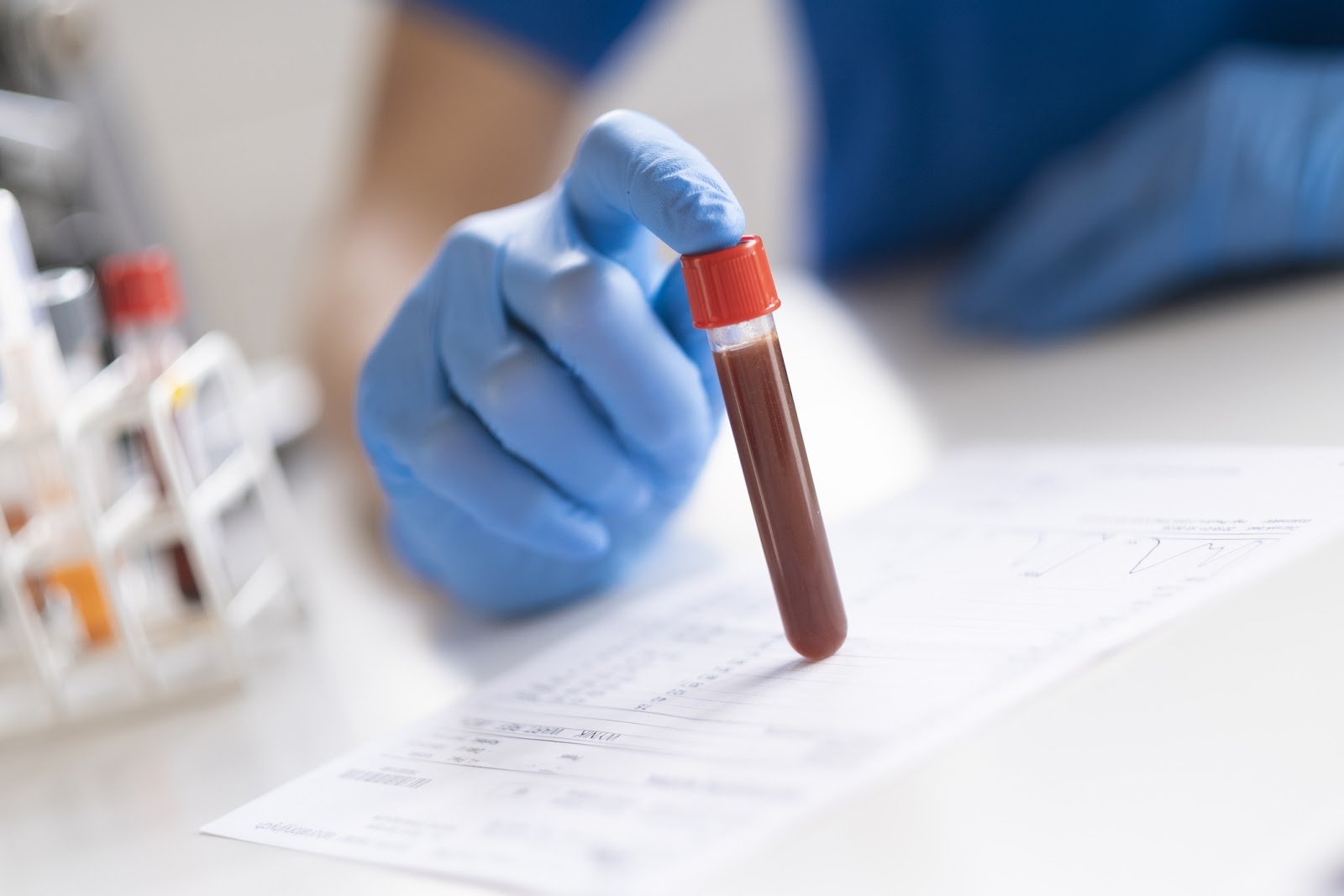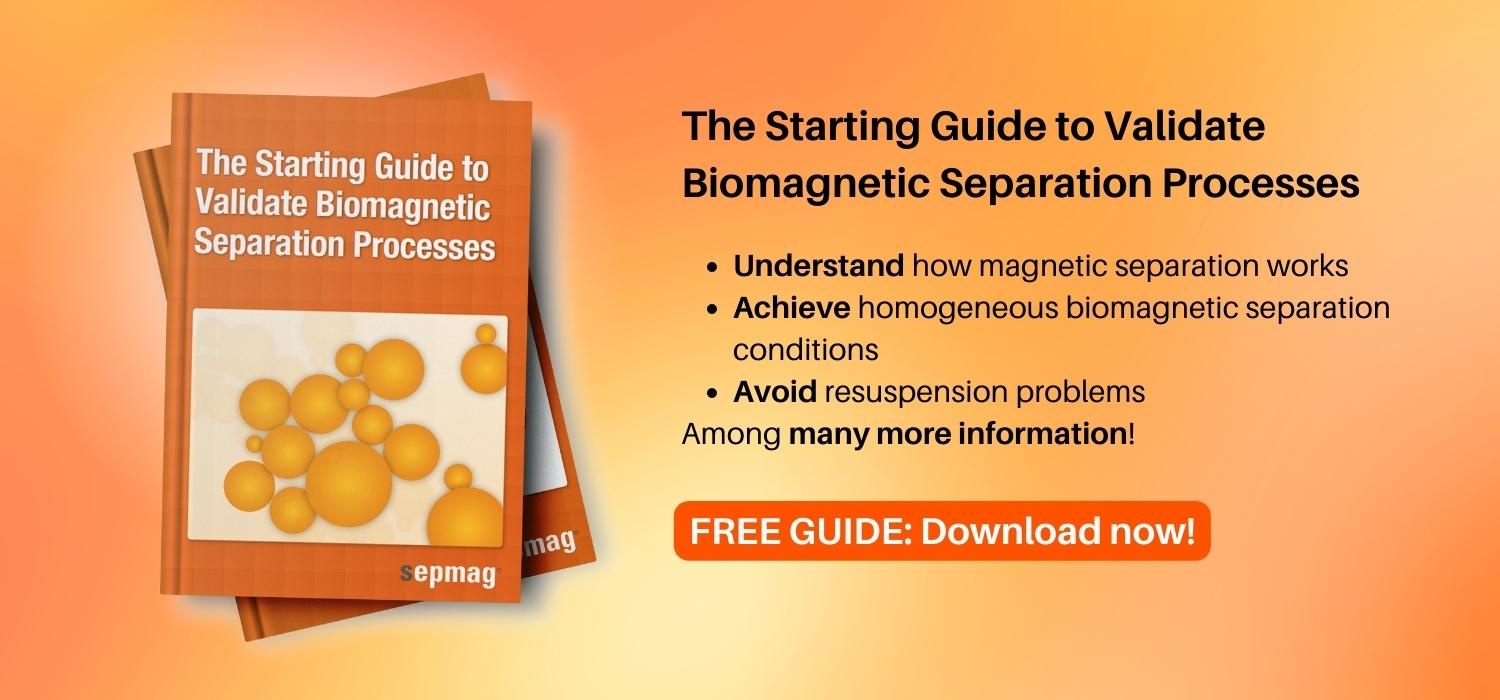Cell separation is ubiquitously used in research and clinical settings where a target cell of interest needs to be isolated from a heterogenous mixture such as serum or plasma. It is used in several scientific disciplines such as immunology, where it helps identify cells present during immune responses, or in cancer research to help elucidate the tissue environment of tumors. Immunomagnetic cell separation uses monoclonal antibodies attached to magnetic beads to increase their ability to bind to target cells. In the magnetic cell separation system, a magnetic force collects the beads, allowing for targeted cell extraction at high yields.
Traditional cell separation techniques involve density gradient centrifugation, which has difficulty achieving good purity and specificity of a sample. Fluorescence-activated cell sorting (FACS) is another method of cell separation, though this technique requires expensive equipment and more costly reagents. Column-based magnetic separation approaches involve the flow of the pre-bound mixture of cells through a column of ferromagnetic beads, which become magnetized in the presence of a magnetic field. Though similar in principle to the use of a magnetic separator, the use of the column apparatus increases costs and experimental testing times. Additionally, columns may be prone to clogging, which often poses risks to loss of sample.
How it Works
The magnetic cell separator system utilizes antibody-antigen binding specificity to bind the molecules of interest, thereby isolating them from the rest of the solution. First, monoclonal antibodies are conjugated to magnetic beads and subsequently mixed with a heterogeneous solution of cells. The magnetic cell separator employs a magnet to pull target cells away from a mixture of cells and help bind them to the magnetic beads.
Magnetic cell separators exist in diverse sizes, providing the capability to effectively separate biological materials ranging from microliters to several liters of solution. The key characteristic in design for magnetic cell separators lies in the capability of the magnets used. Sepmag produces powerful magnets that exhibit a constant force which will ensure efficient, steady separation of the target cells from a solution.
There are two main variations in technique; in positive cell separation the antibody-conjugated beads bind to your target cell population, while in negative cell separation the magnetic beads are functionalized to recognize all other cells. Positive cell separation begins by placing your pre-bound mixture into the magnetic cell separator, which attracts the magnetic bead-conjugated antibodies to the edges of the container towards the magnetic chamber. While the magnetic beads, and therefore cells of interest, become localized to the walls of the container by the attraction of the magnetic chamber, the leftover solution can be disposed of by removing all non-labeled cells. The target cells can then be resuspended, and removing the tube from the magnetic chamber will release them back into solution. Alternatively in a negative selection experiment, when the non-target bead-bound cells are magnetized by the magnetic cell separator, the solution can be extracted which will contain your target population.
Benefits of the Magnetic Cell Separator Approach
Alternatively, immunomagnetic sorting using a magnetic cell separator is favored for its simplicity, quick experimental times, and relatively low cost compared to other methods, especially when working with large sample volumes or rarer cell species. Magnetic cell separation makes use of magnetic beads coated with monoclonal antibodies to bind target or non-target cells.
The generated magnetic force is then used to separate the bound-magnetic beads carefully and efficiently from a solution, allowing for highly targeted cell separation with larger yield and increased purity. As compared to FACS, which inherently can only sort one cell at a time, the magnetic cell separator can separate cells in bulk, allowing for much faster testing and subsequent analysis. Additionally, cell sorting techniques that rely on centrifugation or filtration alone frequently have lower purity levels and yield outputs.
For these reasons, magnetic cell separation via a magnetic cell separator is regarded as the ideal approach when balancing cost and specificity in cell sorting.




